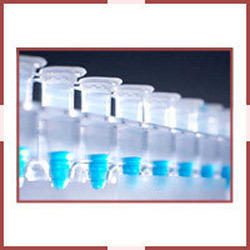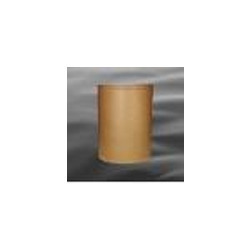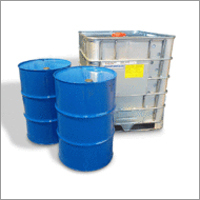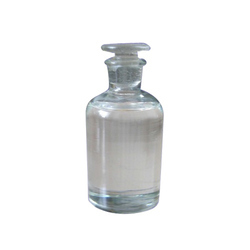Diatomaceous Earth Powder
Price 50 INR/ Kilograms
Diatomaceous Earth Powder Specification
- Solubility
- Insoluble in water
- Appearance
- Off White Powder
- EINECS No
- 231-545-4
- Application
- Filtration, Absorbent, Insecticide, Industrial filler
- Density
- 0.50 Gram per cubic centimeter(g/cm3)
- Product Type
- Diatomaceous Earth Powder
- Usage
- Water filtration, pest control, food additive, polishing
- Smell
- Odorless
- Refractive Rate
- 1.448 1.458
- Grade
- Industrial & Food Grade
- Ph Level
- 6.0 8.0
- Structural Formula
- SiO2
- Molecular Weight
- Approximately 60.08 g/mol
- Physical Form
- Powder
- Other Names
- DE, Kieselguhr
- Melting Point
- About 1,700C
- Shape
- Amorphous
- HS Code
- 25120000
- Molecular Formula
- SiO2nH2O
- Poisonous
- NO
- CAS No
- 61790-53-2
Diatomaceous Earth Powder Trade Information
- Minimum Order Quantity
- 1 Kilograms
- Payment Terms
- Letter of Credit (L/C), Paypal, Western Union, Cash in Advance (CID), Cash Advance (CA)
- Supply Ability
- 100 Kilograms Per Week
- Delivery Time
- 1-2 Days
- Sample Available
- Yes
- Sample Policy
- Sample costs shipping and taxes has to be paid by the buyer
- Main Export Market(s)
- South America, Western Europe, Middle East, Central America, Australia, Asia, Eastern Europe, North America, Africa
- Main Domestic Market
- All India
About Diatomaceous Earth Powder
Features:
- Safe in use
- Effective
- Competitive prices
- Hygienically processed
- The typical chemical composition of oven-dried diatomaceous earth is 80 to 90% silica, with 2 to 4% alumina (attributed mostly to clay minerals) and 0.5 to 2% iron oxide.[1]
- Diatomaceous earth consists of fossilized remains of diatoms, a type of hard-shelled algae.
- It is used as a filtration aid, mild abrasive in products including metal polishes and toothpaste, mechanical insecticide, absorbent for liquids, matting agent for coatings, reinforcing filler in plastics and rubber, anti-block in plastic films, porous support for chemical catalysts, cat litter, activator in blood clotting studies, and a thermal insulator.
Specification
| Purity | 85% |
| Packaging Type | Bag |
| Color | White |
| Form | Powder |
High Performance in Filtration and Absorption
Diatomaceous Earth Powder excels as a filtration and absorbent agent due to its fine particle size and high oil absorption capacity. Whether for water treatment or industrial uses, its amorphous structure and low toxicity make it ideal for safe and efficient processes, ensuring contaminant removal and enhancing product purity.
Safe and Versatile Applications
As a non-toxic and biodegradable powder, DE serves multiple industriesincluding pest control, food processing, and polishing. Its broad application, from insecticide to industrial filler, leverages its neutral pH, high purity, and inert physical chemistry, making it safe for human use and environmentally responsible.
FAQs of Diatomaceous Earth Powder:
Q: How should Diatomaceous Earth Powder be stored for optimal shelf life?
A: Store Diatomaceous Earth Powder at room temperature in a dry area, using the original sealed 25 kg or 50 kg bags to maintain quality. Under these conditions, the shelf life ranges from 1 to 2 years.Q: What makes Diatomaceous Earth Powder suitable for filtration and absorbent applications?
A: Its fine particle distribution (10100 m), high oil absorption, and porous, amorphous structure enable efficient filtration and absorption, helping to remove impurities and trap contaminants in water treatment or industrial processes.Q: When is Diatomaceous Earth Powder safe to use in food or household environments?
A: This powder is non-toxic, odorless, free from hazardous silica, and completely biodegradable. As such, both industrial and food-grade variants are safe for household and food applications, provided the packaging specifies the appropriate grade.Q: Where is Diatomaceous Earth Powder commonly used?
A: DE is frequently utilized in water filtration, pest control, food additive applications, polishing, and as an industrial filler in various manufacturing sectors. It is widely exported and traded from India to global markets.Q: What process ensures the purity and safety of Diatomaceous Earth Powder?
A: The powder undergoes thorough sieving with 99% passing through 325 mesh and is refined to contain less than 1% free silica, ensuring an 85% purity while maintaining non-toxicity and environmental safety standards.Q: What benefit does Diatomaceous Earth Powder provide in pest control?
A: DE acts as a natural insecticide by damaging the exoskeletons of insects through its fine, abrasive particles. This leads to dehydration and pest elimination without harmful chemicals, making it ideal for safe domestic and agricultural use.

Price:
- 50
- 100
- 200
- 250
- 500
- 1000+
More Products in Cleaning Chemicals Category
Dimethyl Terephthalate
Price 125 INR / Kilograms
Minimum Order Quantity : 25 Kilograms
Shelf Life : 2 years
Physical Form : Solid
Storage : Other, Store in cool, dry, wellventilated area
Molecular Formula : C10H10O4
2-Ethylhexanoic Acid
Price 5100 INR
Minimum Order Quantity : 10 Barrels
Shelf Life : 24 months if stored in tightly closed containers
Physical Form : Liquid
Storage : Other, Store in cool, dry, wellventilated area away from direct sunlight
Molecular Formula : C8H16O2
Liquid N Propanol
Price 27500 INR
Minimum Order Quantity : 1 Dram
Shelf Life : 2 years
Physical Form : Liquid
Storage : Other, Store in cool, dry, wellventilated area, keep container tightly closed
Molecular Formula : C3H8O
Dibutyl Phthalate
Price 80 INR
Minimum Order Quantity : 25 Kilograms
Shelf Life : 12 months
Physical Form : Liquid
Storage : Other, Store in cool, dry place, avoid direct sunlight
Molecular Formula : C16H22O4
 English
English Spanish
Spanish French
French German
German Italian
Italian Chinese (Simplified)
Chinese (Simplified) Japanese
Japanese Korean
Korean Arabic
Arabic Portuguese
Portuguese Send Inquiry
Send Inquiry




 Send Inquiry
Send Inquiry Send SMS
Send SMS
